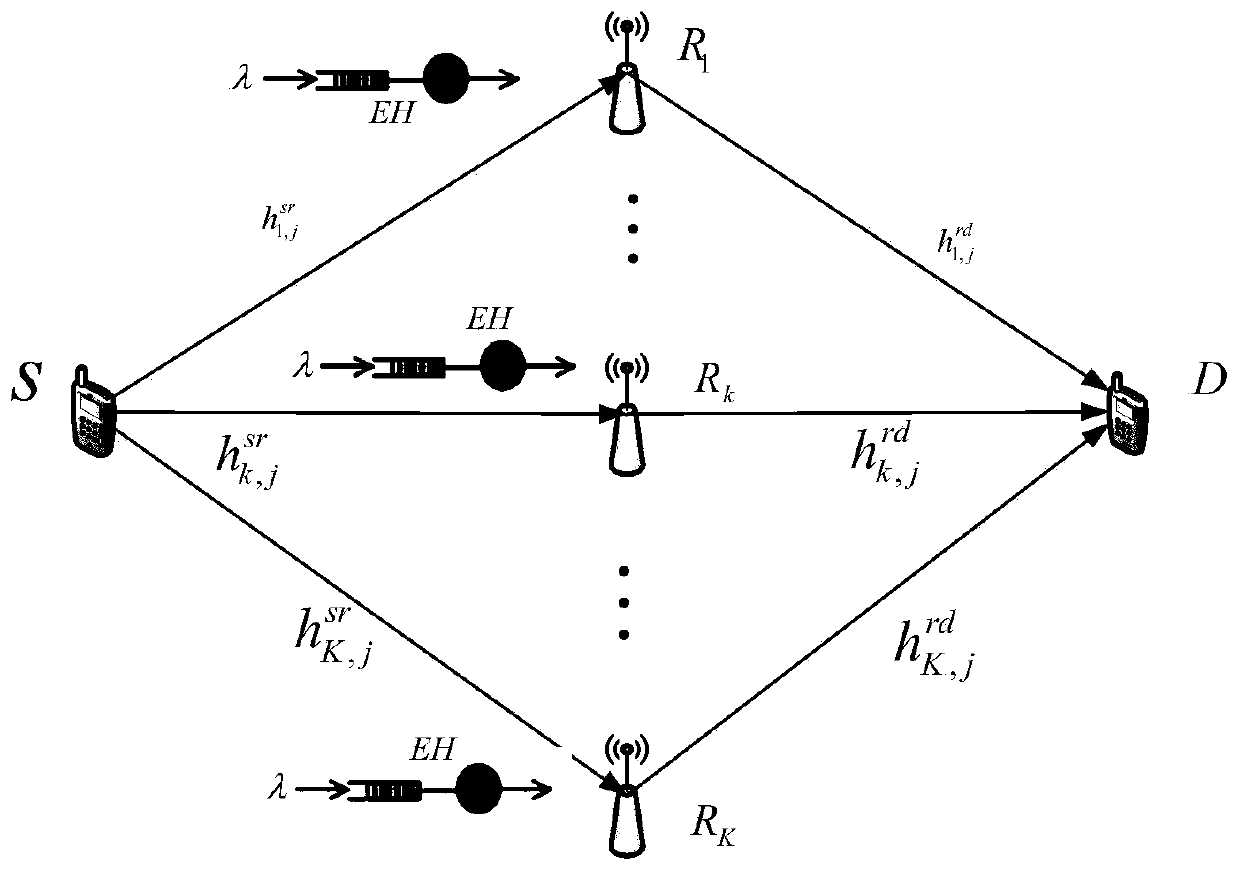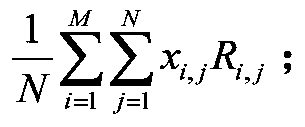A Joint Resource Allocation Method Based on Energy Harvesting Cooperative Communication System
A technology for energy collection and resource allocation, applied in network traffic/resource management, wireless communication, energy consumption reduction, etc.
- Summary
- Abstract
- Description
- Claims
- Application Information
AI Technical Summary
Problems solved by technology
Method used
Image
Examples
Embodiment 1
[0132] A joint resource allocation method based on an energy harvesting cooperative communication system, comprising:
[0133] Step 1: System scenario analysis, problem resolution;
[0134] Step 1.1: System scenario analysis;
[0135] The present invention is aimed at a special application scene, comes from practical application, and the scene setting is meticulous and reasonable, and has practical guiding significance. Consider a multi-relay cooperative communication scenario based on energy harvesting. In the scenario, there is a signal source Source (abbreviated as S), and M relay station Relays for energy harvesting (abbreviated as R i , i=1, 2,..., M) and a target communication terminal Destination (abbreviated as D), there is no direct path between the signal source S and the target communication terminal D, it must pass through the energy harvesting relay station R i Cooperative forwarding, relay station R i Select the working mode of amplification and forwarding, a ...
Embodiment 2
[0173] P1 is non causal CSI / ESI (the current state and future state of the known channel and energy harvesting), which can store the upper bound of energy infinitely. If the constraints in the optimization problem P1 are modified, 1=N is retained, that is, the constraints in P1 are modified condition for Then the optimization problem P1 with high complexity can be turned into a generalized assignment problem P2 (generalized assignment problem, GAP).
[0174] P2:
[0175]
[0176]
[0177]
[0178]
[0179] P2 has no closed-form solution. If the transmission power is fixed, exhaustive search can be solved, but it will be very slow. The 1601 can only solve 4 points during simulation because it is too complicated. Use the solution of P2 as the upper bound of P4 (causal CSI / ESI), and build a suboptimal solution to the P4 problem to approach this upper bound. Although the solution to the optimization problem P2 is still very complicated, the number of iterations ...
Embodiment 3
[0192] if ignored this restriction. Problem P1 becomes the traditional instantaneous information-based relay selection problem P3, which 1601 uses as a lower bound to compare performance characteristics. We use a greedy strategy here to get a better lower bound.
[0193] Account 3:
[0194]
[0195]
[0196]
[0197] The optimal solution of P3 can be obtained by using the classic convex optimization theory:
[0198]
[0199]
[0200] in Indicates that the i-th relay sends the j-th data block is the allocated energy ( We set T later and in the simulation C = 1), Indicates the energy stored by the i-th relay before sending the j-th data block, P i rmax Indicates the maximum transmission energy of the i-th relay.
[0201] The energy update formula of relay node i: (there is a corresponding relationship between energy and power )
[0202]
[0203] in, Indicates the energy collected by the i-th relay during the transmission of the k-th data blo...
PUM
 Login to View More
Login to View More Abstract
Description
Claims
Application Information
 Login to View More
Login to View More - R&D
- Intellectual Property
- Life Sciences
- Materials
- Tech Scout
- Unparalleled Data Quality
- Higher Quality Content
- 60% Fewer Hallucinations
Browse by: Latest US Patents, China's latest patents, Technical Efficacy Thesaurus, Application Domain, Technology Topic, Popular Technical Reports.
© 2025 PatSnap. All rights reserved.Legal|Privacy policy|Modern Slavery Act Transparency Statement|Sitemap|About US| Contact US: help@patsnap.com



